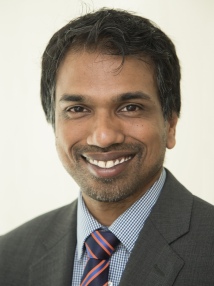With outside influences like the Internet, distinguishing between men who are dealing with the normal symptoms of aging and men who have hypogonadism can be challenging.
Although testosterone replacement therapy (TRT) is a standard recommendation for the treatment of symptomatic hypogonadism in men, reaching a proper diagnosis remains a challenge, explains Channa Jayasena, MA, PhD, MRCP, FRCPath. Studies, he notes, have shown that outside factors, such as practitioner perception of the patient and a patient’s independent research, may influence the decisions made regarding initiating TRT.
According to Dr. Jayasena, the greatest challenge in treating hypogonadism is “making the diagnosis in the right men. We rely on a combination of blood test measurements and accurate self-reporting of symptoms. Unfortunately, the Internet has biased many men to overinterpret normal ups and downs in life as being symptoms of hypogonadism. We all feel tired and low in mood sometimes and don’t always want to have sex.”
The study group notes that when a clinician observes these characteristics in a patient, their decisions may be influenced by outside sources. Therefore, they recommend clearer guidance to reach greater consistency in the treatment of hypogonadism.
Clearer Guidelines Needed for Treatment of Hypogonadism
For a study published Clinical Endocrinology, Dr. Jayasena and colleagues aimed to identify clinical characteristics associated with the likelihood of being prescribed TRT in a primary care setting. Participants who received TRT had an older mean age, higher BMI, and higher risk for hypertension, depression, T2D, and ischemic heart disease. This group also had lower mean pretreatment total testosterone measurements and was less likely to have prostate cancer.
Men most likely to be prescribed TRT were between the ages of 45 and 69 (peaking at 50-54), compared to other age groups (Figure). The study team explains that hypogonadism typically increases with age, with testosterone levels declining annually by about 1% once a man reaches age 40. Aging, the study authors say, is also linked with an increased incidence of cardiovascular comorbidities, which may dissuade some physicians from initiating TRT.
Better Outreach to Primary Care Physicians Is Needed
Guidelines are often the first source that practitioners turn to when finalizing diagnosis and treatment protocols, notes Dr. Jayasena, but guidelines are not finite and different perspectives and opinions can complicate the recommendations. “The guidelines are pretty clear, but there are many of them, and they are worded carefully to reflect many differences in opinions,” he adds. “Therefore, better outreach to engage/train primary care practitioners to deal with specific situations would be a greater help.”
With outside influences like the Internet heightening self-reported symptoms, distinguishing between men who are dealing with the normal symptoms of aging and men who have hypogonadism can be challenging, and misdiagnosis can have negative consequences.
Clinicians Need to Be Mindful of Overprescribing Testosterone
Dr. Jayasena emphasizes this important distinction in treatment: “Testosterone is an extremely safe drug when given to the right men,” he says. “Testosterone is always unsafe when given inappropriately and prescribed to men with ‘normal’ symptoms. This will hopefully assure clinicians who are overly cautious about prescribing and warn the minority of primary care clinicians who over-prescribe the drug.”
The study team concurs that treating hypogonadism needs to be part of a complete approach to patient care and that treatment protocols should incorporate the significance of lifestyle choices and behaviors. “An increasing number of men have hypogonadism because they are unhealthy in other aspects of their life (functional hypogonadism). We need to define to what extent testosterone more clearly will help these men, beyond ‘tried and tested’ approaches like weight loss and exercise programs.”



 Rebecca Shover
Rebecca Shover